MobilityData facilitates changes to internationally used mobility data standards, including the General Transit Feed Specification (GTFS), General Bike Feed Specification (GBFS), Transit Integrated Data Exchange Specification (TIDES), & The Transit Operational Data Standard (TODS). The General Transit Feed Specification (GTFS) is used by over 10,000 transit operators so they can share their data with trip planning applications. Anyone in the world can propose changes to the specification and vote on adopting new features. Do you want to learn more about how to use the specification? Go to gtfs.org for an in-depth breakdown of the specification and data examples. Changes to GTFS are made on consensus by anyone who wants to participate. MobilityData facilitates each stage of the change process to make sure the highest priority needs of the industry are addressed. Someone shares an idea for a new feature as an issue on the GitHub repository. This can be anyone across the world. A proposal is shared on how to implement this feature in the specification. Anyone can read the proposal and provide feedback. MobilityData facilitates workshops to resolve issues. One data producer and one data consumer commit to implementing the new feature as first adopters. The first adopters share their dataset with the new feature to get feedback and insight from the public. The proposed change goes to a vote. Anyone can vote and the vote is made based on consensus. The new feature is added to the official specification. Transit operators and trip planning applications across the world can now use it. Do you want to know what features the GTFS community is actively discussing and developing? Take a look below to see the specification roadmap. The General Bike Feed Specification (GBFS) is used in over 40 countries so shared mobility operators can share their data with trip planning applications. Anyone in the world can propose changes to the specification and vote on adopting new features. Do you want to learn more about how to use the specification? Go to gbfs.mobilitydata.org for an in-depth breakdown of the specification and data examples. Changes to GBFS are made on consensus by anyone who wants to participate. MobilityData facilitates each stage of the change process to make sure the highest priority needs of the industry are addressed. Someone shares an idea for a new feature as an issue on the GitHub repository. This can be anyone across the world. A proposal is shared on how to implement this feature in the specification. Anyone can read the proposal and provide feedback. MobilityData facilitates workshops to resolve issues. The proposed change goes to a vote. Anyone can vote and the vote is made based on consensus. The change is placed into Release Candidate (RC) status. The change remains in RC status pending implementation. During this time, the change is added to the GBFS validator. The change is adopted by different data producers and consumers and implemented in their datasets. Once the feature is adopted by a data producer and a data consumer, it is merged into an official current release. Do you want to know what features the GBFS community is actively discussing and developing? Take a look below to see the specification roadmap. TIDES is the Transit Integrated Data Exchange Specification and is your key to accessing, managing, and using transit operations data. The Transit Operational Data Standard (TODS) is an open standard for describing how to operate scheduled transit operations which can be used to port scheduled operations between software products (e.g. scheduling systems and CAD/AVL systems), agencies, and more. ODS leverages the existing General Transit Feed Specification (GTFS) and extends it to include information about personnel and non-revenue service.Data Standards
What is GTFS?
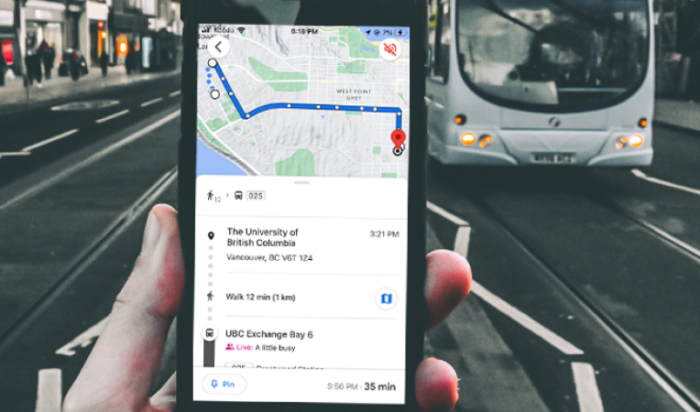
What it looks like to passengers
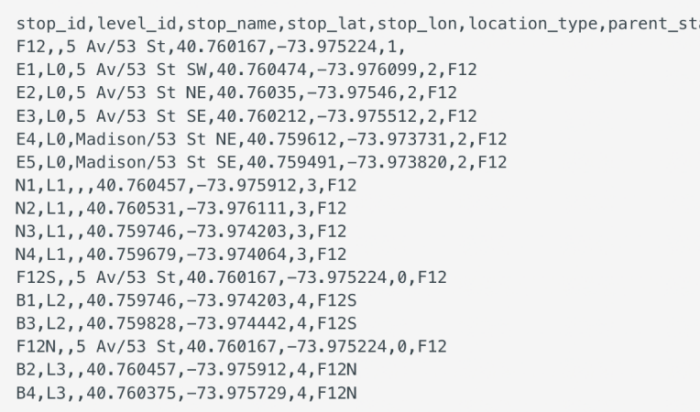
Part of what it looks like in GTFS
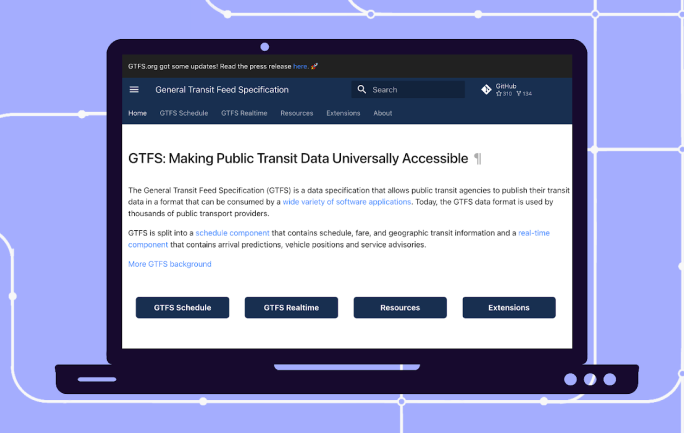
How changes to GTFS are made
![]()
Step 1: Idea
![]()
Step 2: Feature Proposal
![]()
Step 3: Feedback
![]()
Step 4: First adopters
![]()
Step 5: Dataset published
![]()
Step 6: Public Vote
![]()
Step 7: Adoption

What is GBFS?
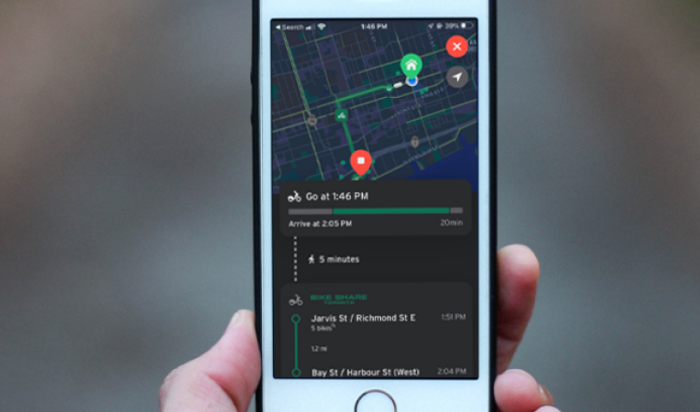
What it looks like to passengers
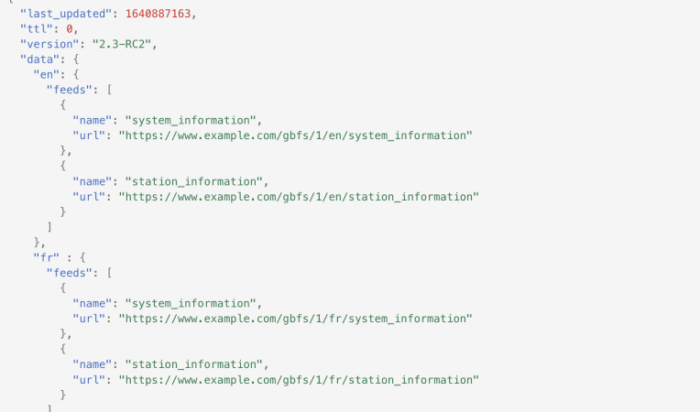
Part of what it looks like in GBFS
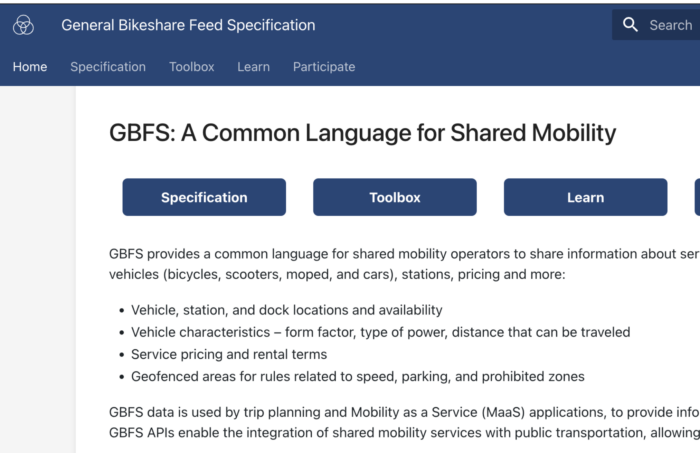
How changes to GBFS are made
![]()
Step 1: Idea
![]()
Step 2: Feature Proposal
![]()
Step 3: Feedback
![]()
Step 4: Vote
![]()
Step 5: Release candidate version status
![]()
Step 6: Adoption
![]()
Step 7: Official version status

What is TIDES?
What is TODS?